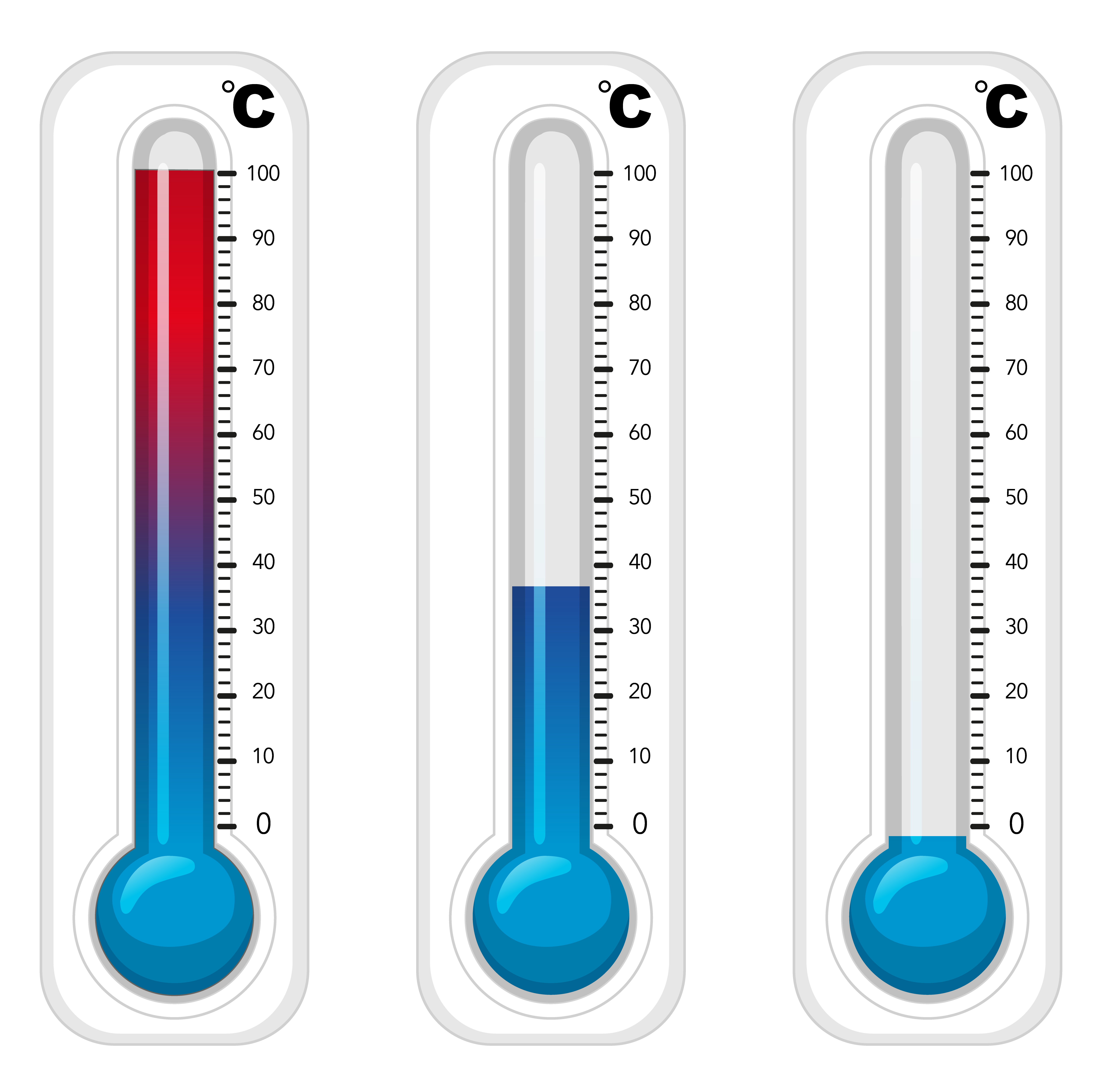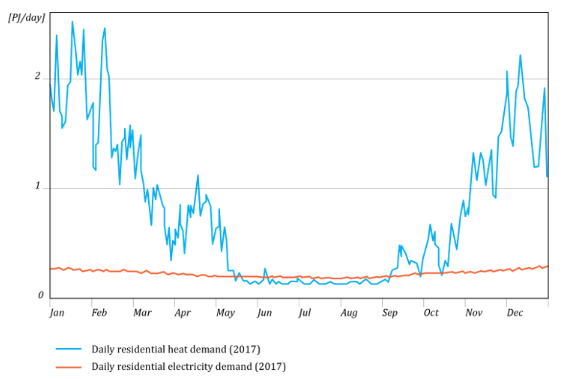4.1.2 Lecture Notes Trends
Course subject(s)
4. Intelligent Control and Integration of Heating in the Energy Systems

This image is from freepik
This lecture will briefly explain the relevant trends in sustainable heating and cooling. The following topics will be covered:
- The different trends in heating and electricity
- The role of demand response strategies in heating/cooling compared to power systems
The different trends in heating and electricity
If the demand for electricity is compared with the demand of residential heating, it can be seen that they follow different trends. In the figure below, the daily electricity demand and the daily residential heating demand for the Netherlands are shown. The electricity demand is relatively flat throughout the whole year, whereas there is a clear seasonal pattern for the heating demand. The demand of heating in the winter is a couple times higher than the demand in the summer.

It is expected that the energy demand in the future will increase, due to the electrification of cars, heating, and various industries. Because the generation of renewable energy will increase in the future, the electricity grid will become more volatile, due to the daily and seasonal variations in the generation of renewable energy.
The demand for residential heating does not only have a seasonal variability, but also a daily variability. This can be explained by people turning the heating off in the evening and on in the morning. This causes daily variations.
The heat supply sources of the future can be divided into two different categories:
- Base-load sources: this are sources that are constant throughout the year, such as geothermal energy or energy from data centres.
- Seasonal sources: this are sources that have seasonal variations over the year, such as solar collectors or PV heating.
Since both the sources are typically low temperature sources, this results in a lower thermal power and energy density.
The demand response strategies in heating/cooling
This limited thermal power needs to be considered if those sources are applied for residential applications. Both heating and cooling have variations at daily scale and at seasonal scale. Therefore, these variations need to be matched, which requires storage.
An important aspect is that thermal storage is cheaper than electrical storage. Large scale thermal storage can cost in the order of 50 euro per MWh, whereas electrical storage can cost around one million euro per MWh. At daily scale, thermal storage can be free due to the thermal inertia of buildings. For daily variations, demand response solutions such as load shifting, or peak shaving can be applied for both heating/cooling supply and in electricity supply.
The daily demand response can be relatively simple. If it is cold in the winter, heating devices such radiators can be limited or kept on during the night to avoid excessive morning peaks. Due to the thermal inertia of buildings, these morning peaks can be avoided. This demand response strategy is an easy solution to reduce the mismatch between heat demand and renewable sources.
It is also possible to develop demand response strategies in the electricity grid. However, this is more complicated, because the highly volatile nature of renewable energy sources. To achieve this, many appliances, such as washing machines and refrigerators, need to become smart and intelligent. The domestic electricity grid can then communicate with the grid operator when to turn certain appliances on or off, to match the power supply from PV and wind. The demand response for heating and cooling can be applied on individual level, which makes it relatively easy to apply demand response strategies.
Conclusion
In this lecture, the different trends in heating and electricity demand were discussed. These trends were very different. Also, the different aspects of demand response strategies were covered.

Technology of Intelligent and Integrated Energy Systems by TU Delft OpenCourseWare is licensed under a Creative Commons Attribution-NonCommercial-ShareAlike 4.0 International License.
Based on a work at https://online-learning.tudelft.nl/courses/technology-of-intelligent-and-integrated-energy-systems/



